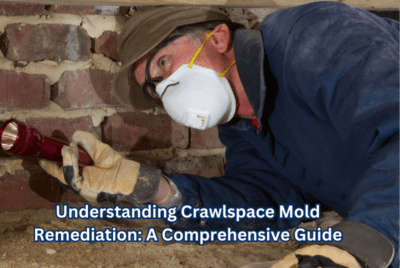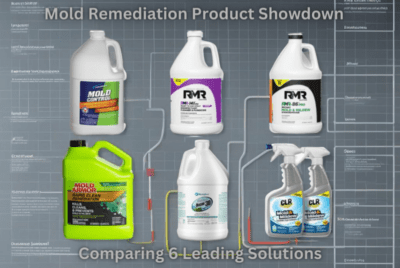Neurological Symptoms of Mold Exposure: Effective Solutions
In this article, we will delve into the neurological symptoms associated with mold exposure, providing you with valuable insights and suggestions on how to address these issues effectively. Mold exposure can have a significant impact on your health, especially when it comes to your neurological well-being. By recognizing and addressing these symptoms, you can take the necessary steps to safeguard your health and create a mold-free environment.
Understanding Mold Exposure
Before we explore the neurological symptoms, let’s gain a better understanding of mold exposure. Mold is a type of fungi that thrives in moist environments, often found in areas with water damage, high humidity, or poor ventilation. When mold spores are present in the air, they can be inhaled or come into contact with the skin, leading to various health issues, including neurological symptoms.
Common Neurological Symptoms
1. Headaches and Migraines
One of the most common neurological symptoms of mold exposure is headaches and migraines. These can range from mild to severe and may be accompanied by other symptoms such as sensitivity to light and noise. If you notice an increase in the frequency or intensity of your headaches, mold exposure could be a contributing factor.
2. Fatigue and Cognitive Issues
Mold exposure can also cause fatigue and cognitive issues. If you find yourself feeling unusually tired or experiencing difficulties with concentration, memory, or decision-making, mold might be affecting your neurological function. These symptoms can significantly impact your daily life and productivity.
3. Sensory Issues
Individuals exposed to mold may develop sensory issues. This can manifest as heightened sensitivity to smells, tastes, or textures. Additionally, some individuals may experience a reduced sense of taste or smell, making it challenging to enjoy food or detect potential dangers such as gas leaks.
4. Mood Disorders
Mold exposure has been linked to mood disorders such as depression and anxiety. If you find yourself feeling persistently sad, irritable, or anxious without an apparent cause, it’s important to consider the possibility of mold exposure as a contributing factor.
5. Sleep Disturbances
Mold exposure can disrupt your sleep patterns, leading to difficulties falling asleep or staying asleep throughout the night. Poor sleep quality can have a profound impact on your overall well-being, affecting your mood, cognitive function, and immune system.
6. Neurological Symptoms in Children
Children are particularly vulnerable to mold exposure due to their developing immune and neurological systems. If your child exhibits symptoms such as frequent headaches, difficulty concentrating, behavioral changes, or developmental delays, it’s crucial to consider mold exposure as a potential cause.
7. Respiratory Symptoms
While not strictly neurological, it’s worth mentioning that mold exposure can also lead to respiratory symptoms such as coughing, wheezing, and shortness of breath. These respiratory issues can further exacerbate the neurological symptoms experienced.
8. Dizziness and Vertigo
Mold exposure has been associated with dizziness and vertigo. Individuals may feel a spinning sensation or a loss of balance, which can be quite distressing and impact their quality of life.
9. Tingling Sensations and Numbness
Some individuals exposed to mold may experience tingling sensations or numbness in their extremities. These sensations can occur in the hands, feet, or other parts of the body, and may come and go or persist over time.
10. Muscle Weakness and Tremors
Mold exposure can contribute to muscle weakness and tremors. These symptoms can affect coordination, fine motor skills, and overall physical abilities.
11. Visual Disturbances
Mold exposure has been linked to visual disturbances such as blurred vision or sensitivity to light. These visual symptoms can be transient or persistent, causing discomfort and affecting daily activities.
12. Difficulty Concentrating and Brain Fog
Mold exposure can impair cognitive function, leading to difficulty concentrating and brain fog. Individuals may find it challenging to focus on tasks, retain information, or think clearly.
13. Seizures
While rare, mold exposure has been associated with seizures in some individuals. Seizures are a serious neurological condition that requires immediate medical attention.
14. Impaired Balance and Coordination
Mold exposure can affect balance and coordination, leading to an increased risk of falls and accidents. Individuals may experience unsteadiness, clumsiness, or difficulty walking.
15. Neurological Symptoms in Pets
It’s important to note that mold exposure can also impact pets, causing similar neurological symptoms. If your pets display unusual behaviors, neurological issues, or respiratory problems, consider the possibility of mold exposure as a potential cause.
Mold Exposure and Chronic Illness
It’s important to recognize that mold exposure can contribute to the development or exacerbation of chronic illnesses. Individuals with pre-existing conditions such as asthma, allergies, or weakened immune systems are more susceptible to the adverse effects of mold exposure on their neurological health. Therefore, it’s essential to address mold issues promptly to prevent further complications.
Seeking Medical Help
If you experience persistent or worsening neurological symptoms that you suspect are related to mold exposure, it is advisable to seek medical help. A healthcare professional can evaluate your symptoms, conduct relevant tests, and provide appropriate guidance and treatment options. They can help determine whether your symptoms are indeed caused by mold exposure or if there are other underlying factors contributing to your condition.
Mold Remediation and Prevention
To mitigate the neurological symptoms associated with mold exposure, it’s crucial to address the root cause by implementing effective mold remediation strategies and preventive measures. Here are some helpful suggestions:
1. Improving Indoor Air Quality
Enhance indoor air quality by using air purifiers equipped with HEPA filters. These filters can capture mold spores and other pollutants, reducing their presence in the air you breathe. Additionally, ensure regular cleaning and maintenance of HVAC systems to prevent mold growth.
2. Maintaining Proper Ventilation
Ensure proper ventilation throughout your living spaces, particularly in areas prone to moisture buildup, such as bathrooms and kitchens. Adequate airflow helps prevent the growth and spread of mold. Consider installing exhaust fans in high-moisture areas and opening windows regularly to promote air circulation.
3. Fixing Water Leaks and Moisture Issues
Promptly repair any water leaks or moisture issues in your home, as these provide an ideal environment for mold growth. Check for plumbing leaks, roof leaks, or any signs of water intrusion. Addressing these problems at their source can significantly reduce the risk of mold-related neurological symptoms.
4. Controlling Humidity Levels
Maintain optimal humidity levels in your home, ideally below 50%. High humidity promotes mold growth, so use dehumidifiers to regulate humidity, especially in humid climates or during periods of high humidity. Keep an eye on humidity levels and ensure proper ventilation in areas prone to moisture, such as basements or crawl spaces.
5. Regular Mold Inspections
Conduct regular mold inspections, especially in areas prone to moisture or previous water damage. Pay close attention to bathrooms, kitchens, basements, and any areas with a history of leaks or humidity issues. Identifying and addressing mold issues early can prevent further spread and minimize the potential impact on your health.
6. Professional Mold Remediation
For extensive mold problems or situations where the mold covers a large area, it is advisable to seek professional mold remediation services. Mold remediation experts have the knowledge, experience, and equipment to safely remove mold and address the underlying moisture issues that contribute to its growth. They can conduct thorough inspections, perform mold testing if necessary, and employ effective remediation techniques to ensure a mold-free environment.
7. Personal Protective Measures
When dealing with mold, it’s essential to prioritize your safety. Wear personal protective equipment (PPE) such as gloves, masks, and goggles to minimize your exposure to mold spores. Avoid direct contact with mold and ensure proper ventilation during remediation activities.
8. Educating Yourself
Stay informed about mold prevention and remediation techniques. Understand the signs of mold growth, know how to identify moisture sources, and be aware of the potential health risks associated with mold exposure. By educating yourself, you can take proactive measures to prevent mold-related neurological symptoms.
9. Environmental Testing
In some cases, it may be necessary to conduct environmental testing to assess the extent of mold contamination and identify the specific types of mold present. Environmental testing can provide valuable information for remediation efforts and help ensure a thorough and effective cleanup process.
10. Professional Indoor Air Quality Assessments
If you have concerns about the indoor air quality in your home or suspect mold contamination but are unsure of the extent or underlying causes, consider hiring a professional indoor air quality (IAQ) consultant. These experts can assess your home’s air quality, identify potential sources of contamination, and provide recommendations for improving IAQ.
11. Ongoing Maintenance and Prevention
Once you have addressed mold issues and remediated the affected areas, it’s crucial to implement ongoing maintenance and prevention strategies. Regularly inspect your home for any signs of moisture or mold growth. Clean and dry surfaces prone to moisture, such as shower walls, window sills, and under sinks. Keep your home well-ventilated, and promptly address any water leaks or plumbing issues.
Conclusion
Neurological symptoms of mold exposure can significantly affect your well-being, but by understanding the signs and taking proactive steps, you can mitigate their impact. Recognizing the common symptoms and addressing mold issues promptly through effective mold remediation and prevention strategies are essential for maintaining a healthy living environment. Remember to seek medical assistance if your symptoms persist or worsen. By prioritizing your health and creating a mold-free space, you can enhance your overall quality of life.
FAQs
Q: Can mold exposure cause long-term neurological damage?
A: While mold exposure can contribute to neurological symptoms, long-term neurological damage is rare. However, individuals with pre-existing conditions or prolonged exposure to high levels of mold may experience more severe effects.
Q: How do I know if my symptoms are caused by mold exposure or another factor?
A: It can be challenging to determine the exact cause of your symptoms without professional evaluation. If you suspect mold exposure, consult a healthcare professional who specializes in environmental medicine or a mold remediation expert.
Q: Can I perform mold remediation myself?
A: Small-scale mold issues can sometimes be addressed by homeowners, but larger or extensive mold problems are best handled by professionals trained in mold remediation. They have the necessary expertise and equipment to ensure safe and effective mold removal.
Q: Are all types of mold harmful to health?
A: While some molds produce toxins that can be harmful, not all molds are equally dangerous. However, it’s essential to address any mold growth promptly to prevent potential health risks.
Q: Can mold exposure cause permanent neurological symptoms?
A: In most cases, neurological symptoms caused by mold exposure are reversible once the mold issue is resolved and the person is no longer exposed to mold. However, individual responses to mold can vary, and it’s crucial to address the issue promptly to minimize potential long-term effects.




